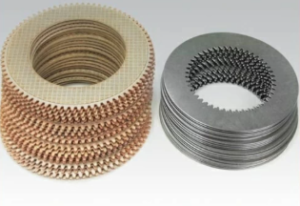

Parts Catalog for Twin Disc MG5114A Marine Transmissions
Plate Kit For Twin Disc MG5114A Marine Transmission
Gasket Kits For Twin Disc MG5114A Marine Transmission
General Overview
What is the Twin Disc MG5114A Marine Transmission?
The Twin Disc MG5114A is a hydraulically actuated marine transmission designed for commercial vessels. It features a 7-degree down angle for better shaft alignment, a conical-helical gear train for quiet operation, and a range of gear ratios for different propulsion requirements.
What types of vessels typically use the MG5114A?
This transmission is commonly found in tugboats, offshore supply vessels, pilot boats, fishing boats, and crew boats due to its robust performance and reliability in continuous-duty operations.
What is the maximum input horsepower and torque rating?
Depending on the reduction ratio and application, the MG5114A is rated for continuous horsepower capacities up to approximately 660 HP (492 kW) and corresponding torque values of up to 1,750 lb-ft.
What are the available reduction ratios for this model?
Available gear ratios include 1.03:1, 1.20:1, 1.48:1, 1.75:1, 1.92:1, 2.04:1, and 2.50:1. Ratio selection should align with engine torque, propeller design, and vessel use case.
Can the transmission operate in both directions?
Yes, it can be configured for either left-hand or right-hand engine rotation by reversing the hydraulic pump orientation and repositioning fittings.
Installation & Setup
What is the correct alignment procedure during installation?
The MG5114A must be aligned with the engine flywheel housing using dial indicators or alignment lasers to within 0.005″ concentricity and face runout to prevent misalignment stress.
What is the weight of the MG5114A?
The dry weight of the unit is approximately 205 kg (about 452 lbs), not including heat exchanger, hydraulic fittings, oil, or optional trolling valves.
Can the MG5114A be mounted at an angle?
Yes, the transmission is designed with a 7-degree down-angle and can be mounted on isolators or rigid mounts as long as engine and propeller shaft alignments are maintained.
What kind of torsional couplings are compatible?
Twin Disc supports various torsional couplings including Vulkan and Centa models. Compatibility depends on flywheel size and application RPM.
What is the preferred mounting bolt torque specification?
This depends on bolt size and material. As a general rule, use SAE Grade 8 torque values lubricated with light oil. For example, a 3/4″-10 bolt may require 295–345 lb-ft of torque.
Oil and Lubrication
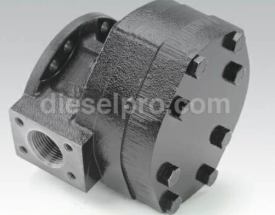
What type of oil is recommended for the MG5114A?
Use SAE 30 or SAE 40 single-grade oil meeting API CD/TO-2 or C-3 transmission fluid specifications. Multi-grade oils like 10W-30 should not be used.
How much oil does the transmission hold?
The transmission holds approximately 7.6 liters (2 gallons), not including oil in hoses and the heat exchanger.
How often should the oil be changed?
Oil and filters should be changed after the first 50 hours of use on new units and every 1,000 hours thereafter under normal conditions.
How do I check the oil level correctly?
With the engine running at idle and the transmission in neutral, the oil should be between the “Low” and “Full” marks. Always check when oil is warm.
What happens if the oil is overfilled?
Overfilling may result in aeration, foaming, loss of hydraulic pressure, or oil leakage from breather ports.
Controls and Hydraulics
Is the MG5114A mechanically or electronically controlled?
It can be equipped with either mechanical lever controls or electronic solenoid valves. Proportional electric control is also available for advanced integration.
What is the function of the GP Control Valve?
The GP Valve provides proportional clutch engagement and allows integration with trolling and electronic throttle systems. It includes a module with LED status indicators.
How do I know if the GP control module is operating properly?
The module includes LED indicators: green for power and red for clutch actuation. Refer to the troubleshooting guide for LED status behavior.
What pressure should the hydraulic system maintain?
The system typically operates around 230–250 psi. The pressure with the primary clutch engaged must match the secondary clutch pressure within 3 psi.
How do I troubleshoot low hydraulic pressure?
Check for clogged filters, worn pumps, valve issues, or improper oil viscosity. Also inspect for leaks and bypassed regulators.
Trolling Capabilities
Can this transmission support trolling operations?
Yes. Optional trolling valves are available for both mechanical and electric selector valves.
How does trolling affect clutch wear?
Proper trolling valve use slows clutch engagement, reducing shock loads and wear. However, excessive trolling at high torque can lead to premature wear.
Do all control systems support trolling?
Only specific electronic and mechanical control valves are trolling-compatible. Confirm compatibility before operating.
Can I retrofit a trolling valve?
In many cases, yes, but ensure proper installation, valve tuning, and hydraulic capacity before operating.
How do I adjust trolling valve performance?
Adjustment may require setting engagement delay or pressure limits. Refer to the control valve’s service guide and never exceed rated operating pressures.
Common Issues and Troubleshooting
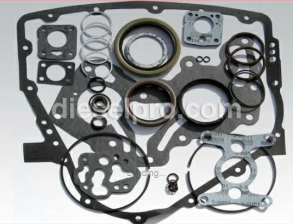
Why is my MG5114A hard to shift?
Possible causes include low hydraulic pressure, faulty solenoids, dirty filters, or mechanical interference in the linkage.
What causes slipping in forward or reverse?
Usually due to worn clutch packs, overheated oil, or improper hydraulic pressure. Inspect fluid condition and clutch wear immediately.
Why is the transmission making a whining noise?
Whining or whining under load often results from pump cavitation, low oil levels, or worn bearings.
What are common oil leak points?
Watch the input shaft seal, output flange, suction manifold, and breather port. All seals should be replaced if leakage is detected.
How can I tell if the pump is failing?
Symptoms include delayed engagement, low oil pressure, abnormal noise, and overheating. Use pressure gauges to confirm pump performance.
Parts and Rebuild Kits

Plate Kit For Twin Disc MG520 Marine Transmission
Gasket Kits For Twin Disc MG520 Marine Transmission
What parts are most commonly replaced?
Clutch discs, separator plates, input/output seals, gaskets, and bearings are typically replaced during standard service intervals.
Does Diesel Pro Power sell rebuild kits for the MG5114A?
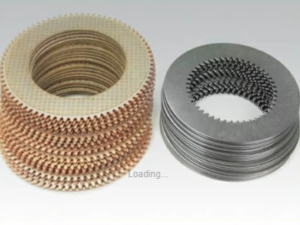
Yes. Their aftermarket kits include high-quality components that meet or exceed OEM specs, including clutch packs, seals, and gaskets.
What’s included in a rebuild kit?
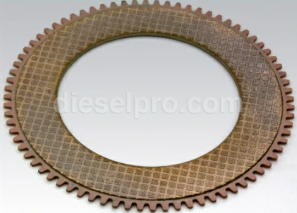
Kits usually contain forward and reverse clutch discs, friction plates, shaft seals, O-rings, paper gaskets, and thrust washers.
When should I do a complete rebuild?
If the unit has over 10,000 service hours, shows signs of excessive wear, or was damaged from oil starvation or overheating, a complete rebuild is recommended.
Can I buy a completely rebuilt MG5114A?
Yes. Rebuilt transmissions with warranty, ready to install, are available and ideal for customers who cannot afford downtime.
Maintenance and Service Intervals

How often should I inspect the transmission?
Daily visual inspections, weekly performance checks, monthly bolt and seal checks, and annual oil changes are recommended. Follow a full maintenance schedule.
How often should I inspect the vent filter?
Inspect monthly and clean or replace if restricted. A clogged vent can increase internal pressure and cause seal failures.
What causes gear wear patterns?
Misalignment, improper oil level, and overloads lead to uneven gear wear. Backlash should be measured and monitored over time.
How do I check for clutch pack damage?
Look for signs of glazing, discoloration from overheating, uneven wear, or cracked steel plates.
What are signs of output bearing failure?
High vibration, growling noises, and metallic shavings in the oil are typical indicators. Replace bearing and inspect shaft fitment.
Disassembly and Reinstallation
What is the first step in removing the MG5114A?
Drain all oil, disconnect the control linkages, and label all hydraulic and electrical lines. Always support the transmission before unbolting.
Can I remove the unit by myself?
Due to the weight and confined engine room spaces, use a hoist or engine crane. Two-person handling is typically required.
What should I inspect once the unit is removed?
Check engine coupling, torsional damper, flex plate integrity, and transmission input shaft for signs of scoring or wear.
Is reinstallation the reverse of removal?
Yes, but pay careful attention to alignment, bolt torque specs, and re-priming of the hydraulic system during reinstallation.
Do I need to prime the hydraulic system before starting?
Yes. Add oil, manually spin the pump shaft if possible, or run the engine briefly in neutral while monitoring pressure.
Storage, Shipping, and Off-Season Use
How should I store a spare transmission?
Seal all ports with plugs, apply rust inhibitors to exposed metal surfaces, and store in a dry, temperature-stable location.
Should I rotate the shaft during long-term storage?
Yes. Periodically turning the shaft helps distribute oil film and prevents flat spots or internal surface corrosion.
How should I ship the MG5114A?
Crate securely using vibration-dampening blocks, clearly label hydraulic lines, and mark lifting points. Never ship the unit full of oil.
What off-season steps should I take?
Drain oil completely, remove filters, seal ports, and tag components. Rotate input/output shafts every 30–60 days.
Should I use desiccants in storage?
Yes. Desiccant bags inside a sealed bag or crate can prevent moisture condensation and internal rusting.
Miscellaneous and Tips
How can I identify my MG5114A model variant?
Refer to the nameplate on the housing. This includes the BOM (Bill of Materials) number, ratio, and serial number—essential for ordering parts.
What’s the best way to track service history?
Use a maintenance logbook to track oil changes, pressure readings, rebuilds, and hours in service. Consider tagging the unit with last service date.
What tools are required for service?
Standard hand tools, torque wrenches, pressure gauges, dial indicators, and seal drivers are common. A hydraulic test kit is highly recommended.
What precautions should I take when lifting the transmission?
Only use factory-provided lifting eyes or threaded inserts. Never lift the entire engine/transmission combo from the transmission mounts.
Can I use aftermarket parts?
Yes, high-quality aftermarket parts can provide equal or better performance than OEM, often at reduced cost.

Plate Kit For Twin Disc MG5114A Marine Transmission
Gasket Kits For Twin Disc MG5114A Marine Transmission
Videos About Twin Disc Transmissions
6 Reasons Your Twin Disc Transmission Has Low Oil Pressure
7 Reasons Your Twin Disc Transmission Is Overheating
3 Reasons Your Clutch Plates in Your Twin Disc Transmission Are Making Excessive Noise
Bull Gear On A Twin Disc Transmission
Rebuilt Twin Disc Transmissions



 Free US Calls: 1-888-433-4735
Free US Calls: 1-888-433-4735 International: 305-545-5588
International: 305-545-5588